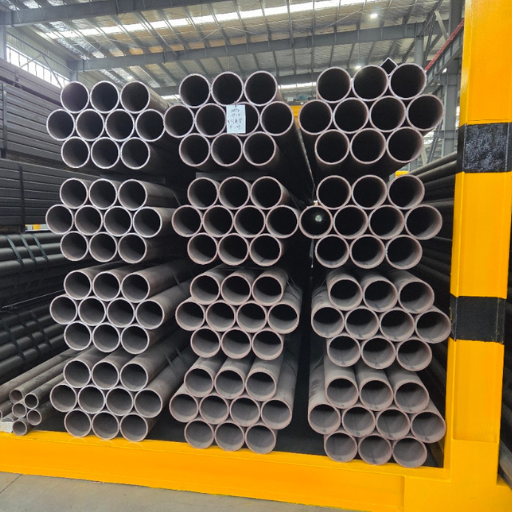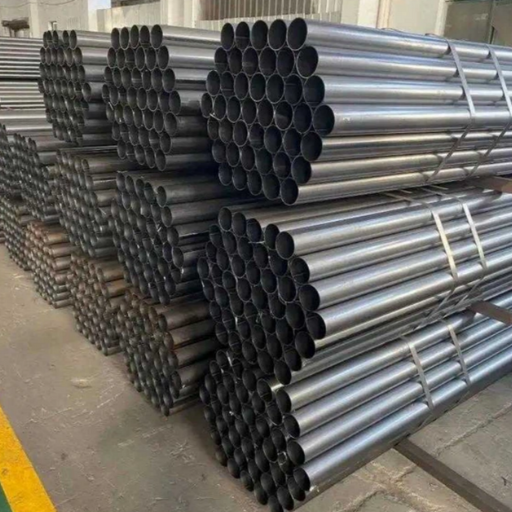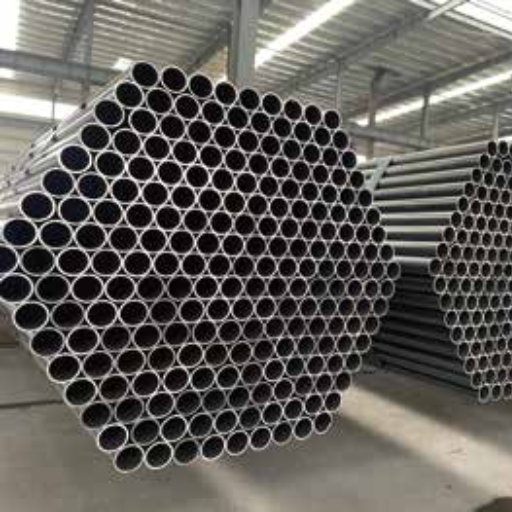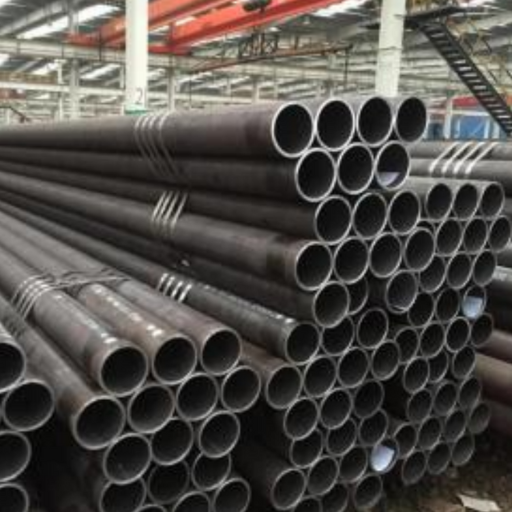-
 Melody
Hi there! Welcome to my shop. Let me know if you have any questions.
Melody
Hi there! Welcome to my shop. Let me know if you have any questions.
Your message has exceeded the limit.

Welded Round Steel Pipe: Applications, Benefits, and Manufacturing Process
2025-10-29 13:50:42
Steel pipes are indeed essential in modern construction, infrastructure, and manufacturing because of their durability and versatility, and are thus used in many industries. Among the many types of steel pipes, welded round pipes offer the best features, including strength, reliability, and cost-efficiency. But what factors make these pipes so popular and what applications do they have in our day-to-day life? In this post, we will discuss the key areas, benefits, and the sophisticated manufacturing process of welded round steel pipes. If you are a construction expert, a production specialist or just someone interested in industrial materials, then this detailed guide will give you a great understanding of why these pipes still play a big role in the progress and growth of industries.
Understanding Welded Round Steel Tubing

Welded circular steel tubing is widely used for its sturdy, multifunctional, and economical properties. The manufacturing process starts with flat steel being rolled into a circle and the edges spot-welded, thus providing the tubing with almost the same quality and strength as the whole steel mass. The uses include not only construction and civil engineering, where it provides and shapes, but also manufacturing sectors for producing long-lasting parts. The non-stop metal joining that welding provides ensures reliable operation under different conditions, making it a choice of trust across various industries.
What is Welded Round Steel Pipe?
Welded round steel pipe is a strong, reliable tubing made by welding the edges of flat steel sheets into a round shape, creating a highly versatile, long-lasting product commonly used in construction and manufacturing.
Types of Welded Round Steel Tubes
Welded round steel tubes can be divided into several types that may be used in different ways and industries. The following are the most widely used types along with their properties and usages:
Electric Resistance Welded (ERW) Tubes
The Electric Resistance Welded (ERW) tubes are made by the electric resistance welding process, in which high-frequency electrical currents are used to weld the edges of the steel. These tubes are widely used in construction, automotive, and agricultural industries, where applications require accuracy and structural integrity. Their diameters generally range from 0.5 to 24 inches, and they have a constant wall thickness.
Spiral Welded Tubes
Spiral-welded tubes are made by coiling a steel strip into a spiral and joining the ends. This type of tube can provide a wide range of resistance diameters and lengths. Furthermore, it is suitable for water raising, oil and gas pipelines, and other large applications. Their capacity to sustain high pressure and long distances makes them a favorite for infrastructure projects. According to data, spiral tubing can have diameters up to 120 inches.
Longitudinal Welded Tubes (LSAW)
Longitudinally submerged-arc-welded (LSAW) tubes are made by rolling steel into a cylindrical shape and welding along the longitudinal seam. This method yields high-strength pipes, which are typically used in structural applications such as bridge construction and heavy machinery. LSAW tubes are particularly well-suited to demanding environments, such as deep-water pipelines, thanks to their durability under harsh conditions.
Double Submerged Arc Welded (DSAW) Tubes
The DSAW tubes have a double-layer weld on both the inside and the outside of the seam, providing greater durability and strength. These tubes are the primary choice for critical industries such as oil and gas and underwater pipeline systems. The double-welding technique enhances the tube's resistance to temperature changes and high pressure.
Precision Welded Tubes
Tubes made by precision welding are produced with tight tolerances and smooth surfaces, making them most suitable for industries such as automotive and furniture production. These tubes have very good machinability, dimensional accuracy, and aesthetic finish, ensuring optimal performance in precision-dependent applications.
Sometimes the welded round steel tube required is determined by Diameter, Wall Thickness, and Application environment. Market research predicts an increase in demand for welded tubes, with global production surpassing 63 million tons annually, mainly driven by the Asia-Pacific region, which accounts for about 50% of the market. Newer welding processes are playing a key role in improving the quality and functionality of these steel products.
Applications of Round Steel Tubing

One of the main reasons for the wide use of round steel tubing is its strength, versatility, and durability across different industries and applications. Here are the five main applications with some details and data:
1. Construction and Infrastructure
Round steel tubing is widely used in large quantities for structural frameworks, scaffolding, and building supports. It is essential for high-rise buildings and bridges due to its capability to carry substantial loads. According to industry reports, nearly 30% of global steel tubing production is intended for the construction sector.
2. Automotive Industry
The automotive industry makes extensive use of welded and drawn round steel tubing for parts such as car bodies, cages, and exhaust pipes, among others. Its strong, light nature works together to deliver fuel economy and safety. New figures estimate that 15% of the total manufactured welded round steel tubing is used by the auto industry globally.
3. Oil and Gas Industry
Round steel tubing is used in the oil and gas industry, primarily in pipeline systems, drilling rigs, and processing plants. The production of these corrosion-resistant pipes is significant in harsh environments. The oil and gas industry is responsible for about one-third of the global steel tubing market.
4. Furniture Manufacturing
Round steel tubing has long been a favored material for modern furniture design, offering high durability while still allowing easy manipulation of aesthetics. The welded tube industry is particularly reliant on the portable and lightweight furniture segment, which accounts for about 10% of total welded tube production.
5. Agriculture and Fencing
Farmers and ranchers rely on round steel tubing for the production of agricultural equipment and irrigation systems, as well as for fence construction. Its resistance to corrosion and ease of adaptation make it suitable for outdoor applications. This amounts to around 8% of global steel tubings.
The industries mentioned above are strong examples of the fact that round steel tubing is not only versatile but also plays a vital role in meeting diverse functional and economic needs.
Construction and Structural Support
Round steel tubes are an indispensable part of the construction process, as they help build structures with great reliability, even for the most diverse and complex projects. Its various characteristics, like strength, durability, and flexibility, make it the most appropriate material not only for the construction of buildings and bridges but also for large-scale infrastructure. Steel tubing is still frequently used in the form of columns, beams, and frameworks, where it can support and distribute heavy loads without deforming or failing.
Recent market reports indicate that the global steel tubing market will grow at a 5.2% compound annual growth rate (CAGR) from 2023 to 2030, driven by construction industry demand. The round steel tubing's flexibility means it can be made to fit the designer's imagination, and hence its great demand in postmodern construction trends, which value not only the practical side but aesthetics too.
Moreover, advances in manufacturing and coating technologies have greatly increased steel tubing’s corrosion resistance and extended its lifespan, making it more suitable for outdoor and high-impact construction work. No matter whether they are skyscrapers or residential homes, round steel tubing is a guarantee of safety, efficiency, and longevity in the most critical structural applications.
Oil & Gas Sector: Transporting Hydrocarbons
Round steel tubing is considered a crucial material in the overall operations of the oil and gas industry, especially in the transportation and processing of hydrocarbons. Its physical characteristics, such as high strength, toughness, and ability to endure extreme conditions, have made it an essential material for this industry. Here are five significant uses of round steel tubing in the movement of hydrocarbons:
Pipeline Infrastructure: The primary use of steel tubes is to transport crude oil, natural gas, and refined petroleum products over long distances safely and efficiently. High-strength steel tubing guarantees minimal leakage and thus the maximum possible lifespan.
Offshore Drilling Rigs: Round steel tubing is part of the supporting structure and riser systems of offshore platforms. It is a source of good on-site support and durability despite the marine environment.
Refinery Systems: Applied in processing units where aromatic hydrocarbon steel tubing is beaten, under severe conditions such as corrosive materials and very high heat, refining operations are deemed critical.
Storage Systems: Having been incorporated into tanks and reservoirs used for the storage of hydrocarbons, round steel tubing provides a very robust, leak-proof design.
Distribution Networks: Local distribution pipelines that deliver gas and other fuels to residential, commercial, and industrial users depend heavily on the reliability and protection provided by steel tubing.
It is the flexibility and reliability of round steel tubing that keep it the main material used for hydrocarbon transportation across the oil and gas industry.
Benefits of Using Round Steel Pipe

Durability and Longevity
High-grade steel pipes are extremely and practically indestructible, as they can even withstand the most severe environments and the highest pressures. Corrosion resistance for steel pipe is one of the best features that ensures durability and longevity, therefore, cutting down in the long run in terms of maintenance and replacement costs.
High Strength-to-Weight Ratio
Excellent strength-to-weight ratio is the main advantage of round steel pipes, along with being very lightweight. This property confers on them the so-called ability to be used in applications where the load-bearing capacity is exceptionally high, yet the infrastructure is not overburdened.
Cost-Effectiveness
Given their durability and low maintenance, round steel pipes offer a clear, cost-effective advantage in the long run. What is more, their availability almost everywhere has also contributed significantly to their competitive pricing compared with alternatives.
Flexibility in Application
The very characteristic of round steel pipes that they can be produced in many different sizes and thicknesses makes them very versatile and able to suit various application industries like, for example, from pipelines for energy to frameworks in construction, including residential and commercial ones.
Environmental Sustainability
Steel can be recycled, and round steel pipes help the environment through the recycling process. Reusability and recyclability are considered modern environmental standards; hence, the pipes will not only prolong the life of landfills but also conserve resources that would otherwise be consumed during mining or extraction.
Durability and Strength of Carbon Steel
Carbon steel is the material of choice in many demanding applications due to its excellent durability and strength properties. The following five features describing carbon steel reflect the qualities mentioned above:
High Tensile Strength
One of the major advantages of carbon steel is its very high tensile strength, which means it can sustain heavy pulling or stretching forces without breaking. This is one of the reasons it is used in construction and other areas where weight is a critical parameter.
Impact Resistance
Due to its energy-absorbing properties, carbon steel does not crack or fracture during sudden impacts, making it the preferred material for heavy-duty machinery or buildings.
Resistance to Wear and Abrasion
Hardness of carbon steel is the reason for very low wear and abrasion idensity, thus prolonging the life of parts that are often subjected to friction or rough environments.
Adaptability to Heat Treatment
Carbon steel can have different properties depending on the treatment it undergoes, so that, for example, it can be made very hard and at the same time very flexible depending on the use.
Corrosion Prevention (When Coated)
Carbon steel is prone to rusting; however, applying protective coatings such as galvanizing or painting greatly increases its resistance to rust and environmental damage, prolonging its life in the open air.
Cost-Effectiveness and Efficiency
Carbon steel is widely considered a cost-effective material because of its low price and durability. Its cost is lower than that of other metals like stainless steel or aluminum, which has led to its widespread use in large-scale manufacturing and construction projects where price matters most. A recent survey shows that the price of carbon steel ranges from $600 to $800 per metric ton, which is still well below the cost of stainless steel, which is over $3,000 per metric ton.
However, carbon steel is not only cost-effective but also efficient across many applications. Its high strength-to-weight ratio can help significantly in constructing strong, heavy structures that require less material and thus lower labor costs. In addition, the steel's ability to undergo a variety of heat treatment processes can be a plus for its mechanical endurance. This in a way, also, of course, cuts down on the frequency of replacements in arduous conditions. Moreover, modern innovations involving advanced coatings and alloying techniques have steadily enhanced the performance and lifespan of carbon steel, which is already a sustainable and cost-effective choice for a myriad of industries across the globe.
Specifications and Standards

Carbon steel, a versatile material with a variety of international specifications and standards governing its production, is always associated with high quality, reliability, and performance. These specifications outline the chemical composition, mechanical properties, and suitable manufacturing processes for different applications. The following are some of the most recognized standards with their particulars:
International Standards for Carbon Steel:
ASTM Standards (American Society for Testing and Materials):
ASTM A36: It is one of the most common structural steel grades, offering strength and weldability. The yield stress (for A36) is specified at a minimum of 36,000 psi (250 MPa).
ASTM A106: The standard is intended explicitly for seamless carbon steel pipes for high-temperature service. The pipes are divided into three grades (A, B, and C) based on some criteria like tensile strength and chemical composition.
ASTM A572: This is a high-strength, low-alloy steel commonly used in bridges and buildings where higher strength than regular carbon steel is required.
EN Standards (European Standards):
EN 10025-2: The standard provides a roadmap for non-alloy structural steels, including the grades S235JR, S275JR, and S355JR. Yield strength is the major factor that differentiates these grades. These grades are widely used in structural engineering and plate-making.
EN 10297-1: It deals with seamless circular steel tubes for mechanical and general engineering uses, with stringent standards for chemical composition and mechanical properties.
JIS Standards (Japanese Industrial Standards):
JIS G3101: It lays down the basic grades of rolled steel meant for general structural purposes, one of which is SS400, which has wide applications due to its material properties.
JIS G4051: It refers to carbon steels that are intended for machine structural purposes, one of its grades S45C that finds extensive use in automotive and machine building.
Key Data and Properties:
Carbon Content: In the range of 0.05 to 2.1% by weight; it has a direct influence on hardness, strength, and ductility.
Tensile Strength:
Mild Carbon Steel (Low carbon content): 400–550 MPa
Medium Carbon Steel (Moderate carbon content): 500–800 MPa
High Carbon Steel (High carbon content): 800–1200 MPa
Melting Point: The melting point is around 1425°C to 1540°C (2597°F to 2800°F), and the exact temperature depends on the alloying elements.
Density: About 7.85 g/cm³, making it a good option for use in applications where weight is a limiting factor.
Certifications and Testing:
In general, carbon steel products that conform to these standards undergo quality testing, including mechanical tests such as tensile and impact tests, as well as non-destructive evaluations such as ultrasonic or X-ray inspection. The certification from the standards organizations is proof that the material is compliant with the specific industry standards.
The practice of applying these specifications and standards allows companies and end-users to maintain constant, safe operation; therefore, carbon steel is not only a high-performing but also a reliable material worldwide.
ASTM A500 and Other Relevant Standards
ASTM A500 is an essential specification for carbon-steel structural tubing, formed by either welding or seamless processes; its principal types are the round and square. The specification provides the requirements for chemical composition, tensile and yield strength, and dimensional tolerances, all aimed at using steel tubing for the most reliable and supportable applications in industry and construction alike. The following standards of ASTM A500 and four other comparable standards of the same area deal with structural steel and carbon steel:
ASTM A500
Scope: It includes cold-formed, welded, and seamless carbon steel tubing for structural purposes.
Grades: It has A, B, C, and D grades, each with its own specific strength criteria.
Applications: Frequently found in construction, bridges, and infrastructure.
Key Mechanical Properties: (Grade C as an example)
Tensile Strength: Minimum 58,000 psi
Yield Strength: Minimum 46,000 psi
ASTM A53
Scope: The standard states the requirements for welded and seamless steel pipes used in pressure and mechanical applications.
Grades: The specification covers Grades A and B.
Key Feature: The material can be used under high-temperature, high-pressure conditions.
ASTM A106
Scope: It covers the manufacture of seamless carbon steel pipes for high-temperature applications.
Applications: The material is extensively used in the oil, gas, and chemical industries.
Grades: A, B, and C, with B being the most frequently used grade.
ASTM A252
Scope: It is relevant to steel pipe piles that are installed for foundations and structural supports.
Wall Thickness: It is classified into three grades, each allowing for different load capacities.
Applications: The technique is widely used in the construction of civil engineering structures like bridges and buildings.
ASTM A36
Scope: It is a standard for carbon-steel shapes, plates, and bars used in construction and fabrication.
Key Properties:
Tensile Strength Range: 58,000–80,000 psi
Yield Strength Minimum: 36,000 psi
Applications: This steel is perfect for manufacturing and structural elements such as beams and plates.
Quality, performance, and safety in the materials used in various projects and industries are assured through the use of all these standards.
Wall Thickness and Diameter Tolerances
Tolerances for wall thickness and diameter are of utmost importance, as they are the primary criteria for the functionality and performance of steel products, especially in construction, fabrication, and manufacturing. Uniformity, quality, and compliance with the design specs are the main reasons why these tolerances are set.
Wall Thickness Tolerances
The allowed variation in wall thickness is not the same across all materials and processes. Industry standards (e.g., ASTM) provide the following general tolerances for carbon steel:
For seamless tubing, variations can be around ±12.5% of the given wall thickness.
For welded tubing, tolerances are usually stricter, typically ±10% of the nominal wall thickness.
Tolerances for plates and bars are also in the range of ±0.01 to ±0.02 inches, depending on the material grade.
To the end, the wall thickness is not only an assurance of the structural integrity but also an optimal load-carrying capacity.
Diameter Tolerances
Just as with wall thickness tolerances, diameter tolerances are also critical for pipes and cylindrical parts. The following is a list of standard tolerances that the industry sets:
Outside Diameter (OD): For seamless pipes, the variation is typically ±0.75% of the specified OD. This figure is for welded pipes, where it is reduced to ±0.5%.
Inside Diameter (ID): Tolerances often depend on the wall thickness; for precision applications, deviations should not exceed ±0.01 inches.
The tolerances that are a must for proper fit, minimal material waste, and fast, efficient assembly are the ones mentioned above.
Importance of Tolerances in Construction and Manufacturing
If an item has critical thickness and diameter tolerances, it means it is being built to be very safe, and thus will not fail under predictable stress. Discrepancies in tolerances might cause failures, misalignments, or even reduced stability of the entire building.
The tolerances are applied through industry standards and practices and are a key factor in the quality control of materials engineering.
Tags: welded round steel pipe


